
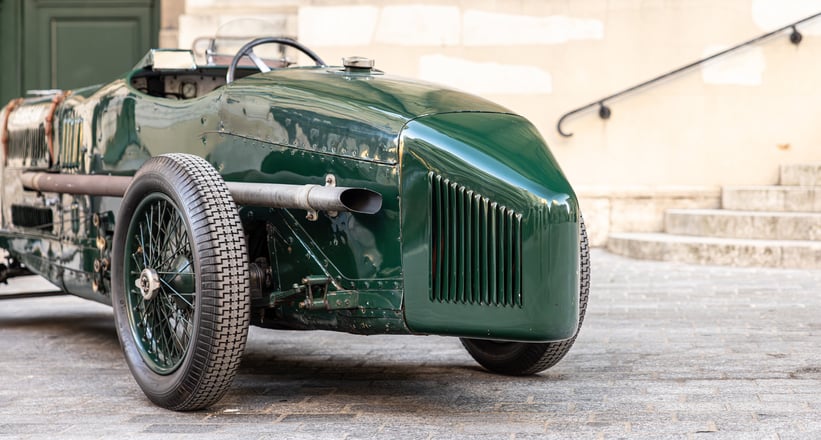
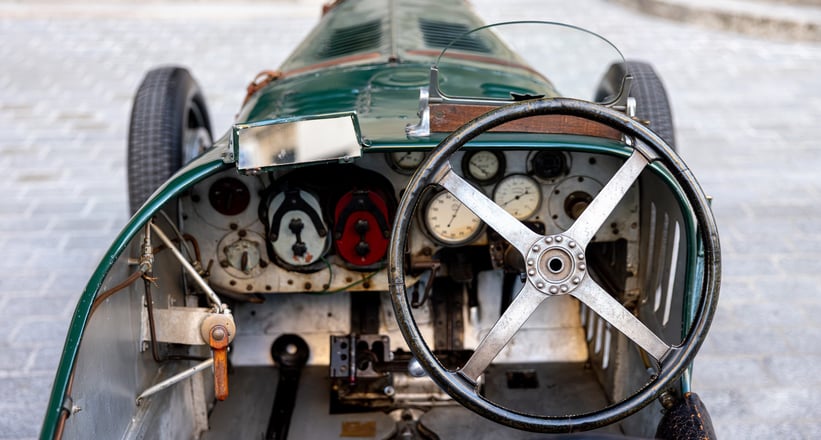
Humanity's relentless pursuit of technological progress has resulted in countless jaw dropping inventions. In modern times technological advancement is most easily observed in the development of smartphones, virtual reality headsets, and artificial intelligence, but back during the dawn of the 20th century, the automobile was the focus of attention for humanity’s brightest minds. One firm involved in this whirlwind of innovation was Sunbeam Motor Car Company, founded in 1905 by John Marston as an offshoot of his bicycle manufacturing business. Although Sunbeam's doors were only open for 29 years, the progress made in those three short decades was truly astounding, culminating in arguably the most impressive British pre-war racing machine of them all: the 1924 Sunbeam Grand Prix “Works” racing car.
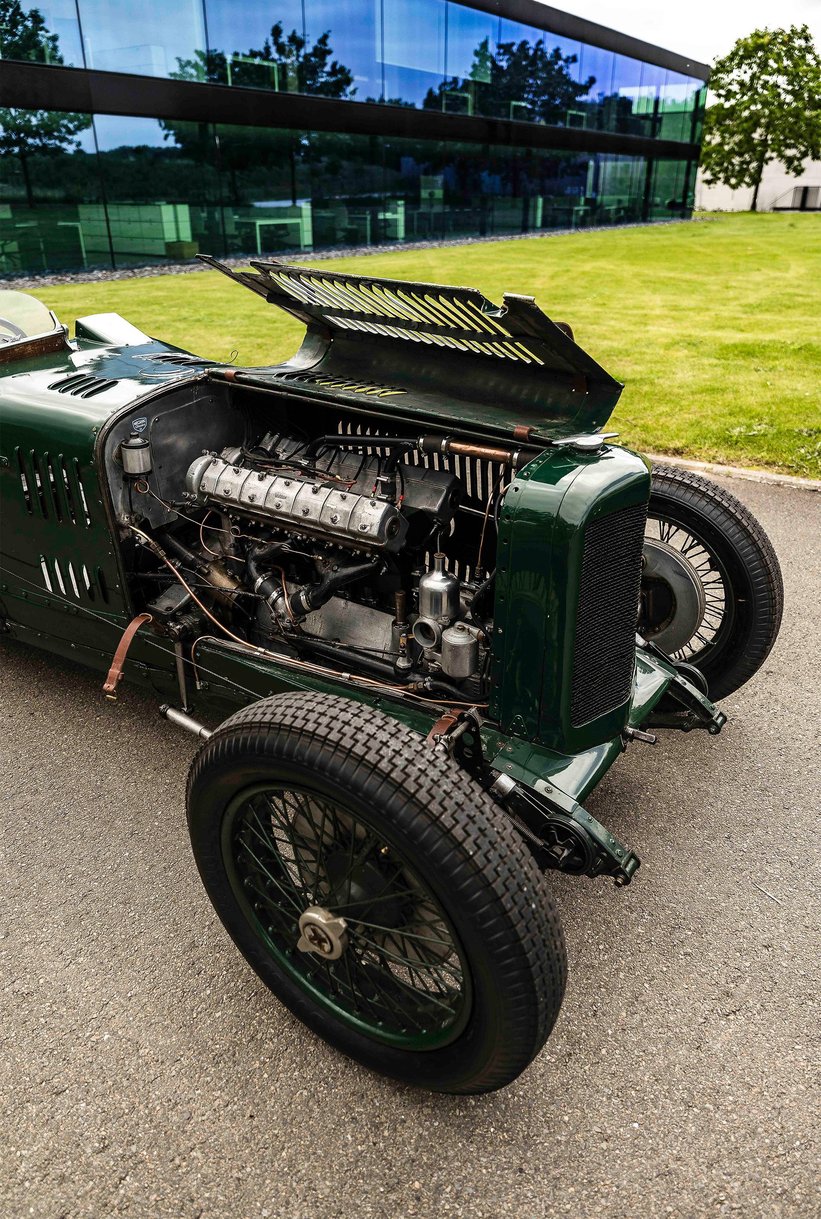
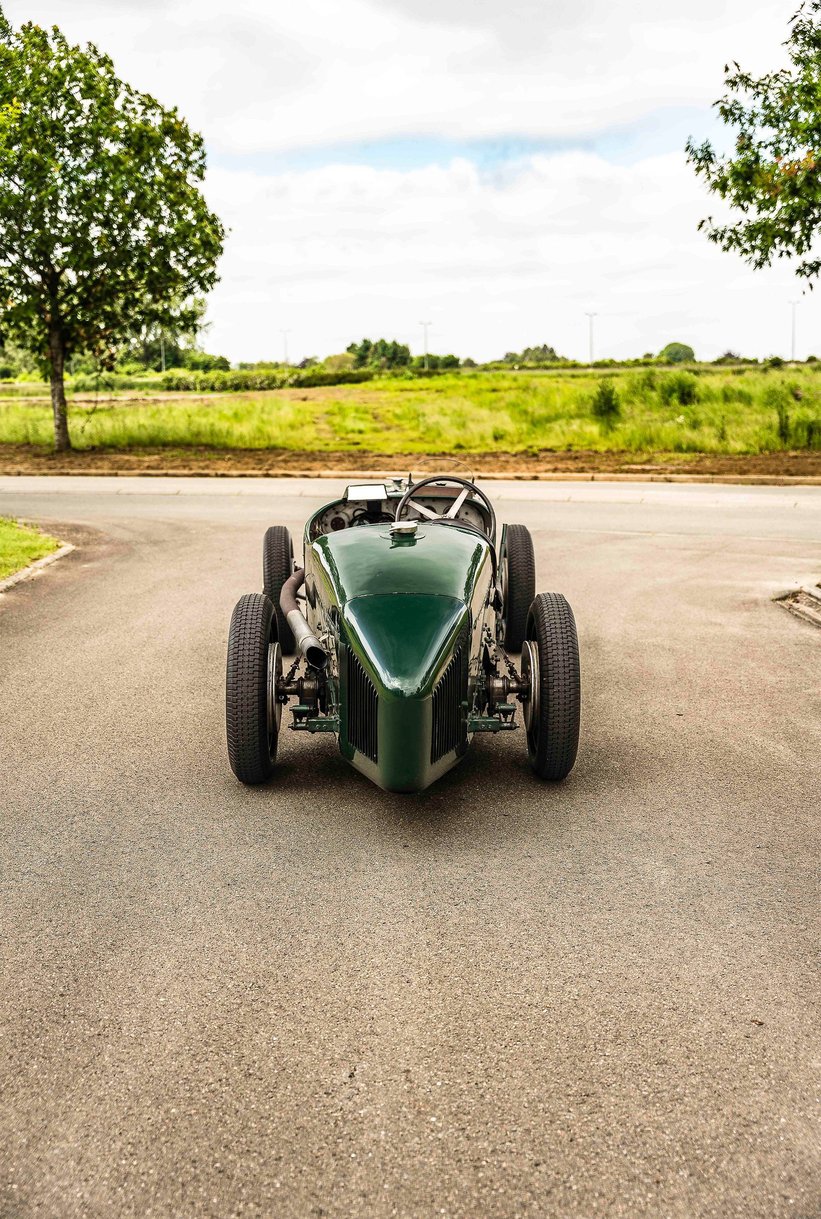
Sunbeam’s Early Days
Before we get to the world-beating grand prix veteran at the heart of today’s story, it's worth mentioning Sunbeam’s first foray into four-wheeled motoring for context. In November 1902, just over two years before Sunbeam Motor Car Company was formally established in January 1905, a comparatively primitive motorcar was unveiled at the Stanley Cycle Show. Powered by a four-cylinder engine and boasting such feats of engineering as four equally-sized artillery wheels fitted with pneumatic tyres, for 525 pounds you could buy a machine that produced a mighty — and you might want to take a seat for this — 12 horsepower! Two years later, Sunbeam did the unthinkable and trumped this monumental output with a 16-horsepower six-cylinder motorcar. Progress was certainly ticking along, but it would be the introduction of Brittany-born designer Louis Coatelen in 1909 that really supercharged Sunbeam’s machines.
Coatelen wasted no time in restructuring production so almost all parts were built in-house at Sunbeam, ensuring they could keep a close eye on production tolerances and quality. Coatelen was also rather partial to a bit of motorsport, famously stating that “Racing improves the breed,” and so it wouldn’t be long before Sunbeam entered the fray with their own Grand Prix racer.

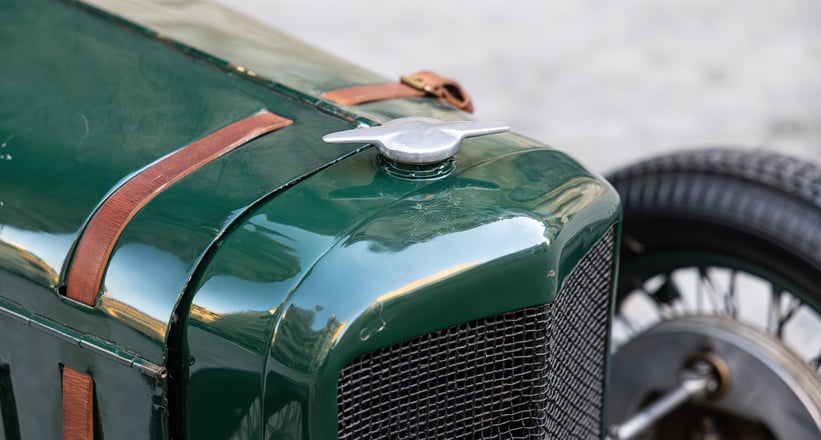
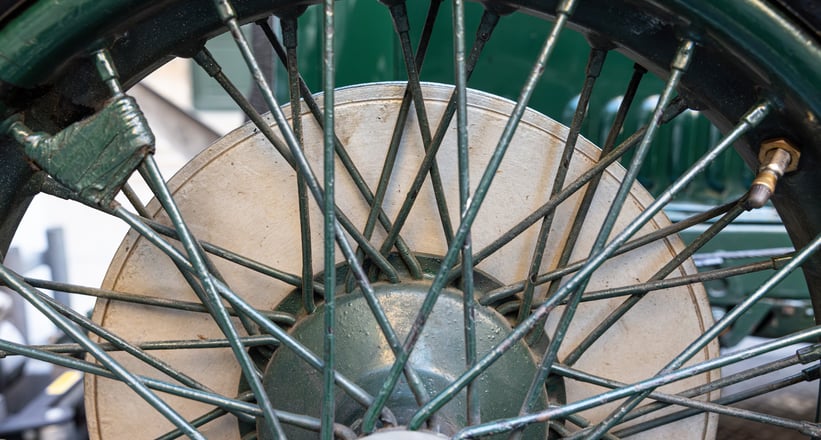
1910 would see the debut of the Sunbeam Nautilus, the marque’s first dedicated land speed record car, which featured a number of “streamlining” measures that predated a more concrete understanding of aerodynamics. Unfortunately, the Nautilus suffered engine issues, but the Sunbeam Toodles II corrected that with an improved valve system, securing Sunbeam their first taste of glory at Brooklands with no less than 22 prizes in 1911, while also laying down the gauntlet with a flying mile of 86.16 mph. However, World War I would put an end to Sunbeam’s motorsport endeavours for a time, as the marque pivoted to producing aircraft engines — giving Coatelen an opportunity to develop his engineering skills along the way.
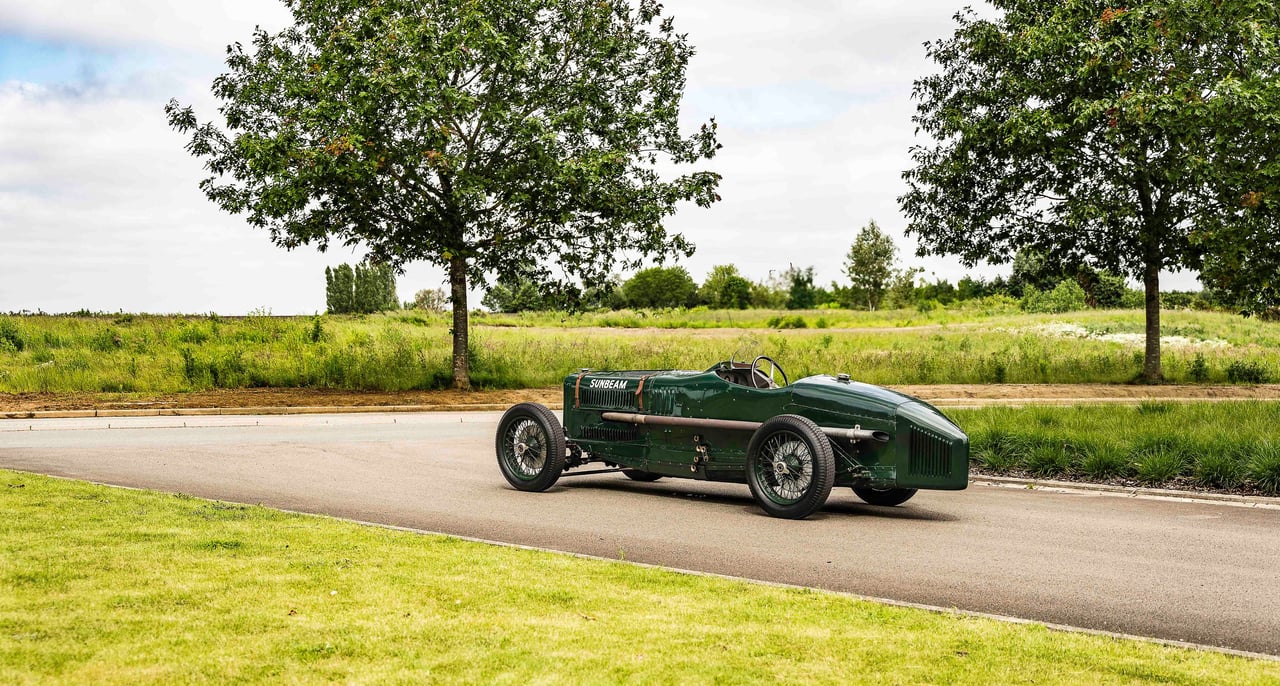


Death and Rebirth
1918 would mark a dark period in Sunbeam’s history with two untimely deaths that shook the company to its foundations. Marston’s third son, Roland, was in line to take over as chairman of Sunbeam, but he tragically died in March of that year, with his father passing the morning after Roland’s funeral at age 82. Two years later, in June 1920, Darracq would take ownership of Sunbeam, with their acquisition of Clément-Talbot following a year later. Despite their shared owner, Sunbeam, Darracq, and Talbot would continue to operate as separate entities.
Following the tumultuous conclusion to the 1910s for the company, Sunbeam would reach its height during the 1920s, growing to employ over 3,500 staff members working in 15 acres-worth of factory buildings. Throughout the brand’s meteoric rise, Coatelen remained committed to producing ever faster machines, and in 1923 after the introduction of the 2-litre Grand Prix Formula, he poached two top engineers from Fiat’s competition department: Vincenzo Bertarione and Walter Becchia.

Hitting the Apex
Ahead of the 1924 Lyon Grand Prix, three new cars were constructed featuring a firecracker of an engine. Under the hood, they were equipped with a 2-litre six-cylinder engine boasting twin overhead camshafts, a Roots supercharger, and dry-sump lubrication. A far cry from Sunbeam’s meagre 12 horsepower origins, these new machines could produce as much as 180 horsepower, while servo brakes on all four wheels helped to outmanouvre the competition. Combine all these upgrades with a lowered chassis, and Sunbeam’s 1924 contenders could reach a dizzying 200 km/h top speed. This car, DA8667, was the third of the trio to be completed and was given the nickname 'The Cub'.
While the Sunbeam name is all but forgotten today, in period these machines were more powerful, efficient, and innovative than any racing cars from Bugatti, Alfa Romeo, or ERA. However, a rapid automobile was just one half of the equation; gifted drivers were needed to extract the full potential of these grand prix racers, and the period’s most famous hot shoes were seen at the wheel of Sunbeam's machines, including Kenelm Lee Guiness, Henry Segrave, Count Masetti, Count Conelli, and Kaye Don.
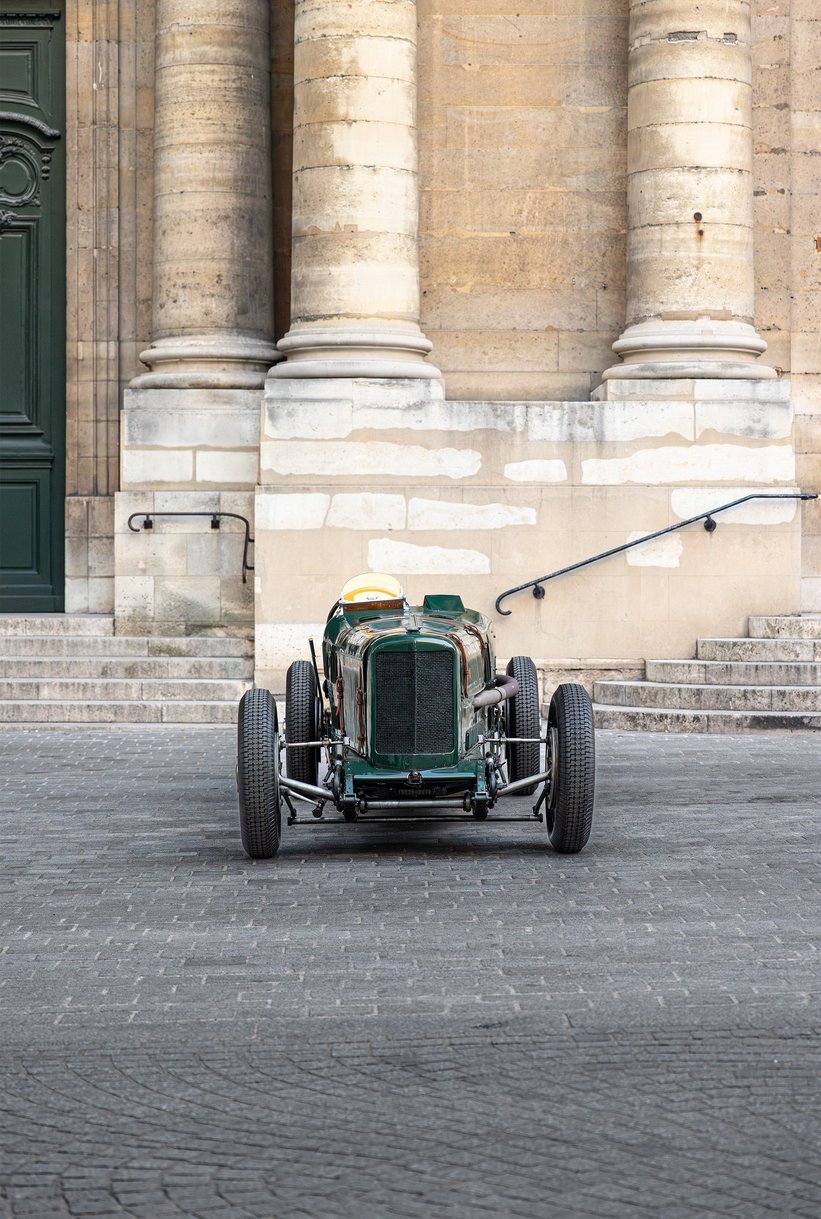
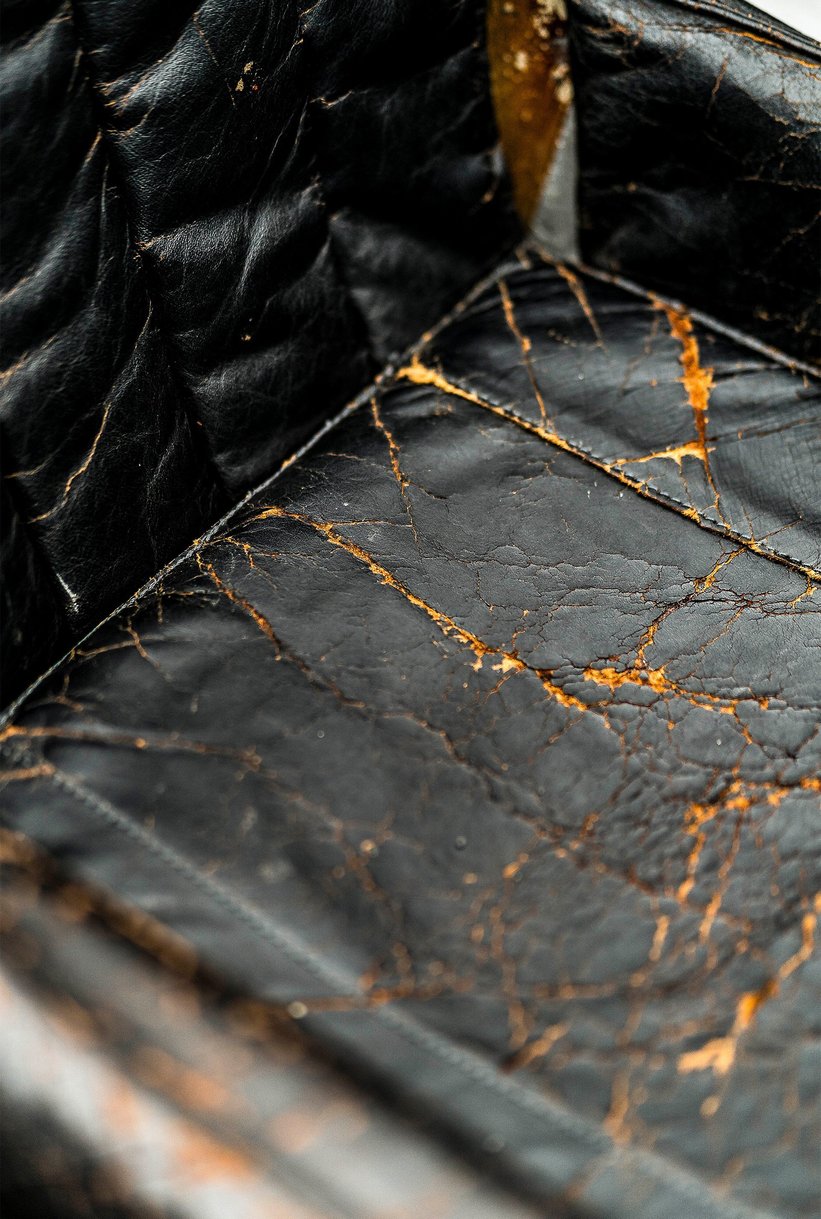
1924 would see the first time this trio of cutting-edge Sunbeams would be driven in anger. The three cars travelled by road from Boulogne via Paris to compete in Lyon in mid-July of that year. While DA8667’s sister car would finish an impresive fifth at the 1924 Lyon Grand Prix with Segrave, setting the fastest lap in the process, DA8667 was forced to retire from second place on lap 21 with Guiness at the wheel. It would prove to be a troublesome year for Guiness, who suffered severe injuries following a terrible crash at the Spanish Grand Prix St Sebastian that would also claim his mechanic’s life. On a brighter note, Segrave managed to secure gold for Sunbeam at the Spanish Grand Prix at San Sebastian later that year.
Segrave would find more success in 1925 at the wheel of DA8667, setting the fastest time at the Essex MC Kop Hill Climb in March, before repeating the feat in May at Shelsley Walsh. By August, it was Count Masetti’s turn for glory, piloting DA8667 to another victory at a hillclimb in Klausenpassrennen, Switzerland. However, DA8667 would truly reach its stride at Brooklands, frequenting the podium at numerous events held there between 1927 and 1930. A certain H. W. Purdy would take ownership of DA8667 in 1930 and continue to race with success at Brooklands until he sold his blistering Sunbeam to Sir Kenneth Peacock later in the decade. In 1940, DA8667 would change hands again, this time being sold to A. S. Heal, who would cherish his prized racing machine until 1955, when it was purchases by Rootes Group Collection, who displayed it for more than 65 years at the National Motor Museum in Beaulieu, England.

Finally, in 2019, DA8667 was acquired by a private collection, before being re-launched and previewed at a VIP event during the Journées d'Automne 2024. Incredibly, DA8667 still retains its original chassis, bodywork and engine. As the only British pre-war racing car to have beaten the competition at the highest level of world motorsport, DA8667 is nothing short of a national treasure. Now you have the unique chance to add this legendary racing machine to your collection.
Photos by Mathieu Bonnevie and Alexis Ruben, Period Photos courtesty of Bibliothèque nationale de France


























